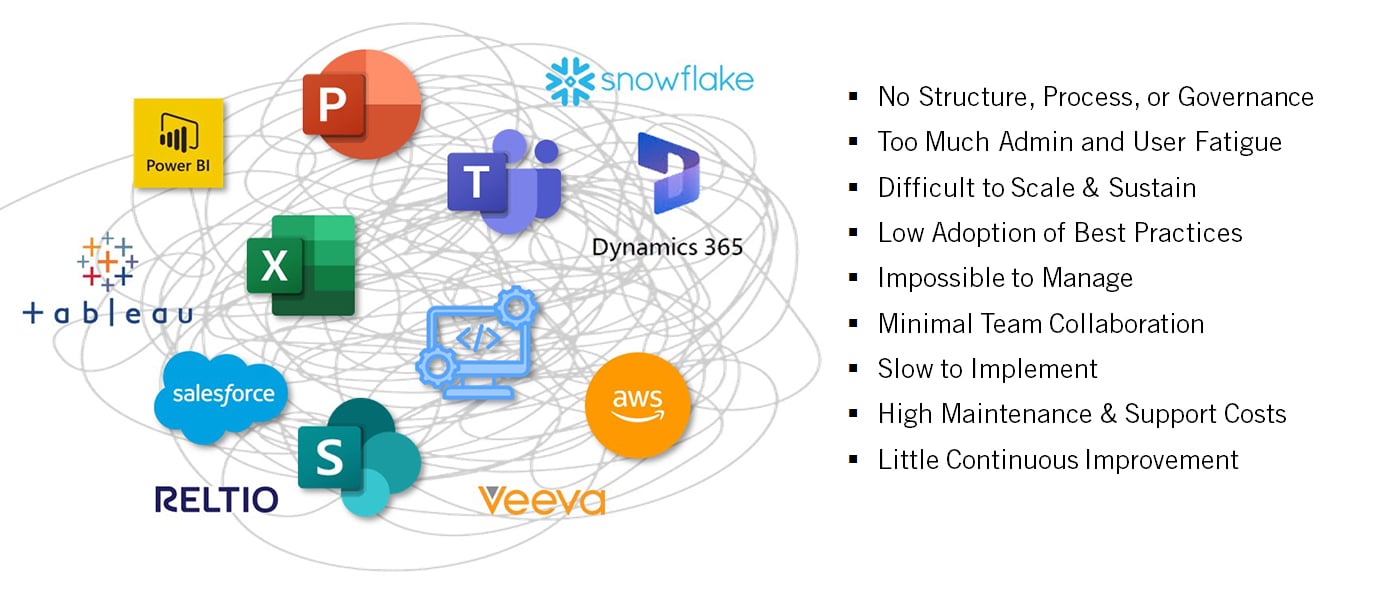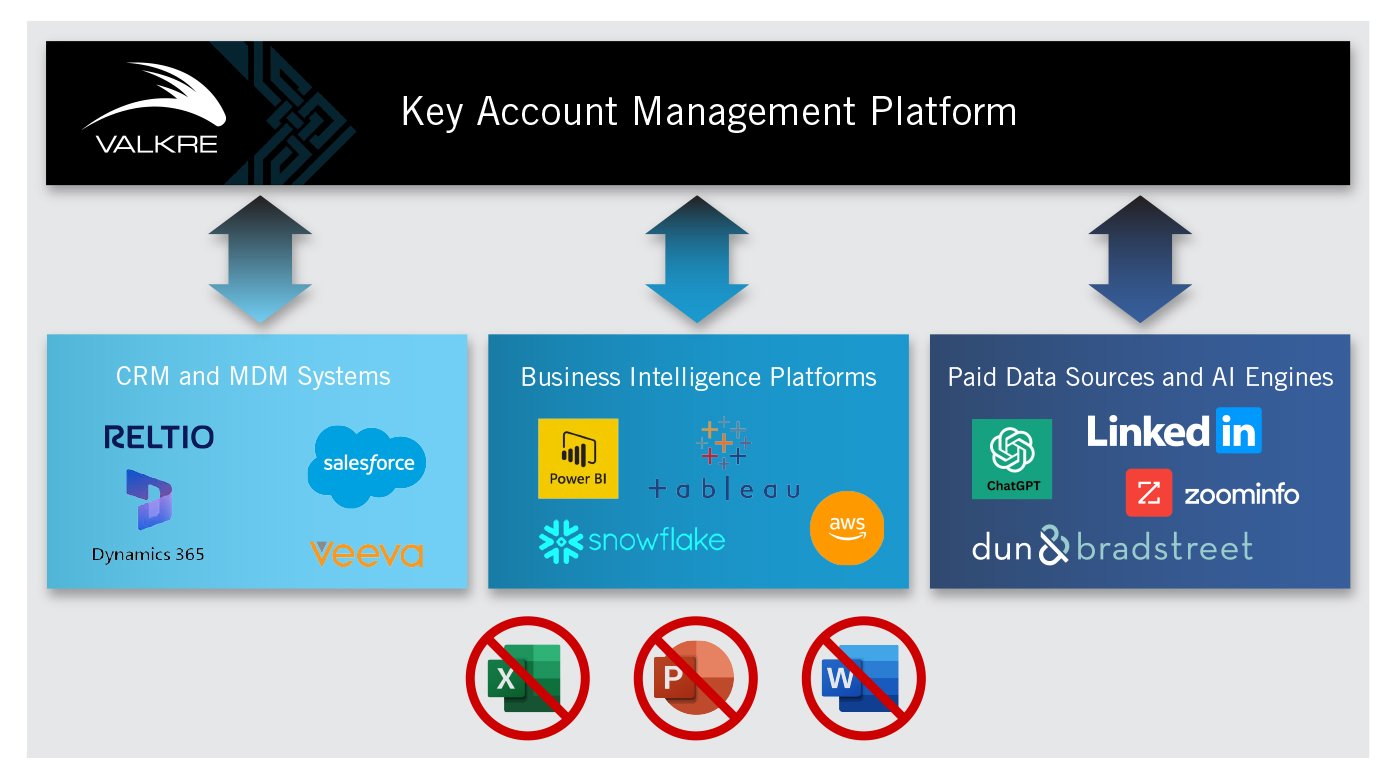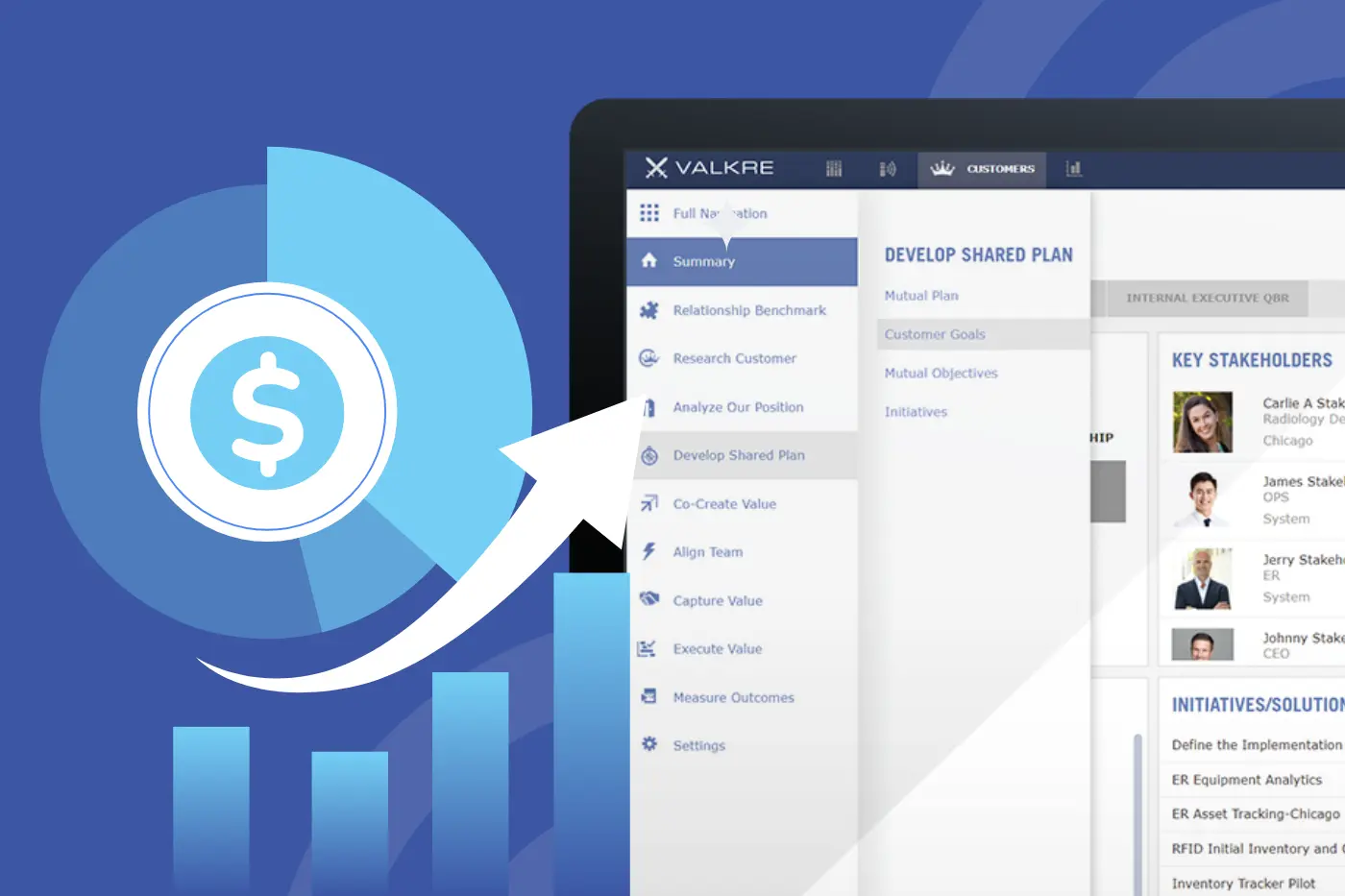Key Account Management (KAM) is transitioning from a niche function to a prominent component of the go-to-market sales strategy. More people, more customers, more revenue, more cost. The function can no longer operate as a bunch of disconnected activities that are nearly impossible to manage at scale.
This shift has been driven by the increasing complexity of customer relationships and the recognition that high-value accounts demand a more strategic, tailored approach. In today’s competitive business landscape, companies cannot afford to treat their key accounts as just another number in their portfolio. Instead, they need to cultivate these relationships with a blend of personalized service and technological savvy.
But it's not just about having the right tools; it's also about adopting the right mindset. Embracing technology in KAM means moving towards a more proactive, data-driven approach. It's about leveraging insights to anticipate customer needs, identify growth opportunities, and deliver solutions that align with their long-term objectives. This approach doesn't just benefit the key accounts – it also drives internal efficiencies, reducing the time and resources spent on administrative tasks and enabling account managers to focus on what they do best: building and nurturing meaningful customer relationships.
THE KEY ACCOUNT MANAGEMENT SPAGHETTI MESS
The infrastructure sitting under KAM Programs is a Spaghetti Mess. A significant portion of the work and communication still relies heavily on basic office tools like MS Word, PowerPoint, and Excel. These tools, while familiar, are not tailored to the complexities of modern key account management.
Additionally, essential data and insights are scattered across various systems such as Customer Relationship Management (CRM), Master Data Management (MDM), Enterprise Resource Planning (ERP), and Business Intelligence (BI) platforms. The critical issue here is the lack of integration and specialization for KAM needs. While KAMs resort to using these tools out of necessity, they are far from ideal.
This disorganized infrastructure leads to several challenges for Key Account Managers. Firstly, the administrative burden is significantly heightened. KAMs find themselves spending an inordinate amount of time manually compiling data from different sources, formatting reports in Word or Excel, and creating presentations to communicate account statuses and strategies. This not only eats into the time that could be spent on strategic thinking and relationship building but also increases the likelihood of errors and outdated information.
Moreover, the lack of a unified system means that KAMs lack real-time visibility into account health and performance. Without a centralized, up-to-date view of customer data, it becomes challenging to proactively address issues or identify opportunities for growth within key accounts. The fragmented nature of these tools also hinders effective collaboration among team members, as they may not all have access to the same information or even the same version of documents.
The Key Account Management Challenges We Hear Every Day
- No Structure, Process, or Governance
- Too Much Admin and User Fatigue
- Difficult to Scale & Sustain
- Low Adoption of Best Practices
- Impossible to Manage
- Minimal Team Collaboration
- Slow to Implement
- High Maintenance & Support Costs
- Little Continuous Improvement

PURPOSE-BUILT KAM TECHNOLOGY IS THE NEW ADDITION TO THE BASICS
The leverage of KAM is far too much to leave it in a Spaghetti Mess. The customer group handled by Key Account Management (KAM) represents a substantial portion of a company's most valuable and influential customers. These are the customers who not only contribute significantly to the company's revenue but also have the potential to influence market trends and brand perception. The existing dynamic of managing these crucial relationships amidst a Spaghetti Mess of disconnected tools and processes has led to the emergence of a new technology category – KAM Tech.
Recognizing the vital role of technology in transforming key account management, esteemed industry bodies like the Strategic Account Management Association (SAMA) now acknowledge technology as an indispensable element of any successful KAM program. This recognition is a testament to the shifting landscape of account management, where technology is no longer a mere facilitator but a critical driver of efficiency, effectiveness, and strategic insight.
KEY ACCOUNT MANAGEMENT SOFTWARE FUNDAMENTALS
We’ve been building KAM technology with partners running every imaginable program over the past 10 years. Many of our partners have even been recognized for achieving best-in-class results.
We think about KAM technology along 4 key dimensions
- Effectiveness: Best chance to be successful
- Efficiency: Reduce administrative burden and increase adoption
- Systemness: Secure, consolidate, and connect intellectual property
- New Insights: Developing new data sets
Effectiveness
The Strategic Account Management Association has a ton of research showing that those who execute their KAM strategies and tactics well achieve significant results such as 2X growth or 10% Gross Margin improvement. But there is a lot of variance between top-tier programs and lower tier. So, we see the first job of KAM Tech as helping with effectiveness.
Specific areas where technology can untangle the Spaghetti Mess and drive effectiveness are:
- Standard KAM process and governance configured by account types
- Comprehensive set of turnkey KAM-specific functionality and best practices
- Team alignment & collaboration features
- Corporate/Marketing alignment & compliance
- Realtime KAM KPI management dashboards
- New strategic dataset available for deeper analysis
- Continuous, focused thought leadership & innovation 12x / Year
KAM Tech drives KAM success by elevating the organization’s competency in many areas.
Efficiency
SAMA research concludes that over 65% of a Key Account Manager’s time is spent on internal administration. This has been a sore spot for programs as the KAMs complain they spend all of their time on internal admin and not doing the job of collaborating with customers more strategically. A healthy part of the complaint is pointed toward systems that do not support the job; the dreaded Spaghetti Mess.
Specific areas where we work every day with our customers to improve KAM efficiency are:
- Intuitive, visual, ‘Live Doc’ user experience
- Access in CRM, web, tablet
- ‘One Place’ access to critical datasets & business intelligence
- Account plan development & maintenance automation
- ‘Live Meeting’ dashboards
- Auto-generate PowerPoint presentations
- Team-based alerts & notifications
KAM Tech is helping with efficiency by reducing administrative burden and driving adoption. Rather than wrestling around with a 70-slide PPT deck, you can present straight out of the KAM technology platform. What an enormous time saver.
Adoption is not so much about adopting technology as it is about adopting the KAM Process. The tech makes it easier and more efficient for the organization to adopt the required processes and discipline of KAM.
Systemness
Systemness is the state, quality, or condition of a complex system. It’s one of those non-word words that has meaning for certain people. Like Key Account Managers.
KAMs live within a complex system. One of the basic requirements of KAM technology is that it needs to exist and integrate well within this system. It needs to improve the systemness of the KAM’s operational environment while helping them serve their customers more effectively and efficiently.
Here is what we mean:
- Secure, SOC2-certified SaaS platform with SSO / MFA authentication
- Encrypted database and REST API
- Turnkey integrations with CRM, MDM, ERP, FTP, BI, and other technologies
- Fast SaaS implementation and configuration
- Minimal ongoing IT support & maintenance
- No incremental fees for enhancements
- Custom co-creation product roadmap
The nature of key accounts is a challenge to technology infrastructure. They cut across geographies and lines of business, require access by non-traditional sales roles, and often have secure viewership rules. Let’s not even get started on communication obligations to multiple stakeholder groups. A key job of KAM technology is to fill these needs and improve the systemness of key account management programs.

New Insights
We mentioned earlier that many account plans are buried in tome-like PowerPoints. They are in a place where it is virtually impossible to use them as a source of data from which to optimize the KAM program.
Imagine 50 Key Account Managers covering 100 Customers. These 100 customers might represent 50% of a company’s revenue. The 50 KAMs serve as General Managers for teams of people interacting with the customer to advance the business.
With KAM technology we can now see all of these activities and use the data to drive insights into what is working and program best practices. It is these insights and best practices that advance the KAM program so it can beat competitors.
KAM technology unlocks a new data set for the organization. The nature of this data set, a collection of metrics from KAM-specific activities, can then become the fundamental building block for organizations to make their KAM programs best-in-class.
THE NEW BASICS
SAMA, the Strategic Account Management Association, the leading authority and community for Key Account Management, is commemorating its 60th anniversary in 2024. This milestone marks six decades of dedication to the evolution and refinement of the KAM discipline. As we celebrate this anniversary, it's important to reflect on how the KAM discipline has evolved, adapting to the ever-changing business landscape.
The essentials of successful key account management have always been dynamic, evolving in response to shifts in market conditions, customer expectations, and technological advancements. From its origins focusing on relationship building and strategic account planning, KAM has grown to encompass a much broader range of competencies and tools. Today, we recognize that the traditional basics, while still foundational, are no longer sufficient on their own.
KAM technology represents the latest and perhaps most transformative addition to the 'new basics' of key account management. In the current fast-paced, data-driven business environment, relying solely on traditional KAM methods is no longer viable. The complexity and scale of managing key accounts today demand more sophisticated tools and technologies. KAM technology bridges this gap, offering platforms and solutions that enhance the efficiency, effectiveness, and strategic depth of KAM practices.
If you’re ready to advance your key account management program and build best-in-class partnerships that grow your business customers, reach out and see what Valkre has to offer. We’re here to help clean up the Spaghetti Mess in your program.





